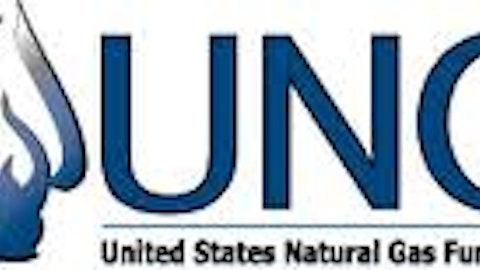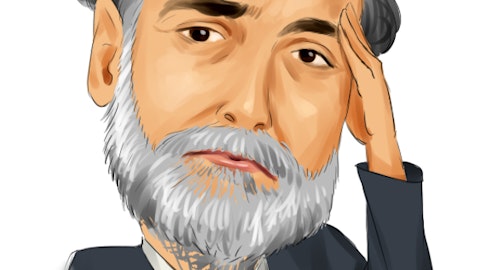
Below we profile the PowerShares DB Com Indx Trckng Fund (NYSEARCA:DBC), one of the oldest and most popular broad-based commodity ETPs on the market.
Vital Stats
Here’s a quick overview of the basics of DBC:
- Issuer: PowerShares
- Index: DBIQ Optimum Yield Diversified Commodity Index Excess Return
- Number of Commodities: 14
- Largest Allocation: RBOB Gasoline (13.26%)
- Inception Date: February 3, 2006
- Expense Ratio: 0.75%
- Assets: $6.1 billion (as of 10/17/2012)
- Structure: Commodity Pool / Partnership
Under The Hood
DBC seeks to replicate the DBIQ Optimum Yield Diversified Commodity Index Excess Return, a benchmark comprised of 14 different commodity futures contracts. The index and base weights for the component futures contracts are presented in the following table (as of 10/16/2012) :
| Commodity | Contract Expiry Date | Index Weight | Base Weight |
| Aluminium | 10/16/2013 | 3.63% | 4.17% |
| Brent Crude | 11/15/2012 | 13.03% | 12.38% |
| Copper – Grade A | 3/20/2013 | 4.30% | 4.17% |
| Corn | 12/14/2012 | 6.73% | 5.63% |
| Gold | 12/27/2012 | 7.66% | 8.00% |
| Heating Oil | 3/29/2013 | 12.53% | 12.38% |
| Light Crude | 6/20/2013 | 11.82% | 12.38% |
| Natural Gas | 9/26/2013 | 4.33% | 5.50% |
| RBOB Gasoline | 11/30/2012 | 13.26% | 12.38% |
| Silver | 12/27/2012 | 1.86% | 2.00% |
| Soybeans | 11/14/2013 | 7.06% | 5.63% |
| Sugar #11 | 6/28/2013 | 4.24% | 5.63% |
| Wheat | 7/12/2013 | 5.73% | 5.63% |
| Zinc | 12/19/2012 | 3.81% | 4.17% |
DBC is well-diversified in the sense that it features exposure to all major segments of the commodity market; this ETP covers energy, precious metals, agriculture, and industrial metals. From a balance perspective however, DBC’s portfolio is quite lacking. This underlying portfolio is very heavily tilted towards the energy family as the various fossil fuel contracts account for half of total assets, increasing the sector-specific risk associated with this product. Furthermore, investors should also note that DBC does not include allocations to livestock (i.e. cattle and hogs) commodities.
Noteworthy Features
There are several noteworthy features of DBC, beginning with the structure of this product. DBC sets itself apart from competitors in the space because it is structured as a partnership that invests in futures contracts. As such, the IRS requires that this fund is marked to market at the end of each calendar year, at which point investors are apportioned a pro rata share of gains or losses. In other words, taxes will be incurred on positions in DBC annually, regardless of whether or not shares in the ETF were actually sold during the year. For long-term, buy-and-hold investors that feature may be less than optimal, since a period of strong gains may result in a significant tax liability. Because of its product structure, investors should also note that shareholders of DBC will be required to complete a Form K-1 annually, which further increases the administrative burden associated with this product [see also The Ten Commandments Of Commodity Investing].
Aside from the various nuances discussed above, DBC features several advantages in addition to offering easy, cost-efficient access to a diverse basket of commodities. When it comes to liquidity, this ETP takes home the cake without breaking a sweat; with over $6 billion in assets under management and average daily trading volumes easily topping 2 million shares, it’s no secret that DBC is a favorite among investors and active traders alike. This ETP also boasts an extremely active options market, allowing for seasoned investors to implement a variety of advanced trading and hedging strategies. Lastly, DBC is available for commission free trading to TD Ameritrade and Firstrade account holders.
How To Use
DBC is perhaps most appealing to active traders who value liquidity above all else and are looking for a quick way to gain exposure to the commodity markets. Because of the various tax and administrative burdens associated with this fund, DBC is likely less than ideal for those interested in achieving exposure to the commodity asset class over the long-haul. Furthermore, the fund’s energy-heavy portfolio will likely deter those who prefer a more balanced approach when accessing this market [see also Crude Oil Guide: Brent Vs. WTI, What’s The Difference?].
This article was originally written by Stoyan Bojinov, and posted on CommodityHQ.




